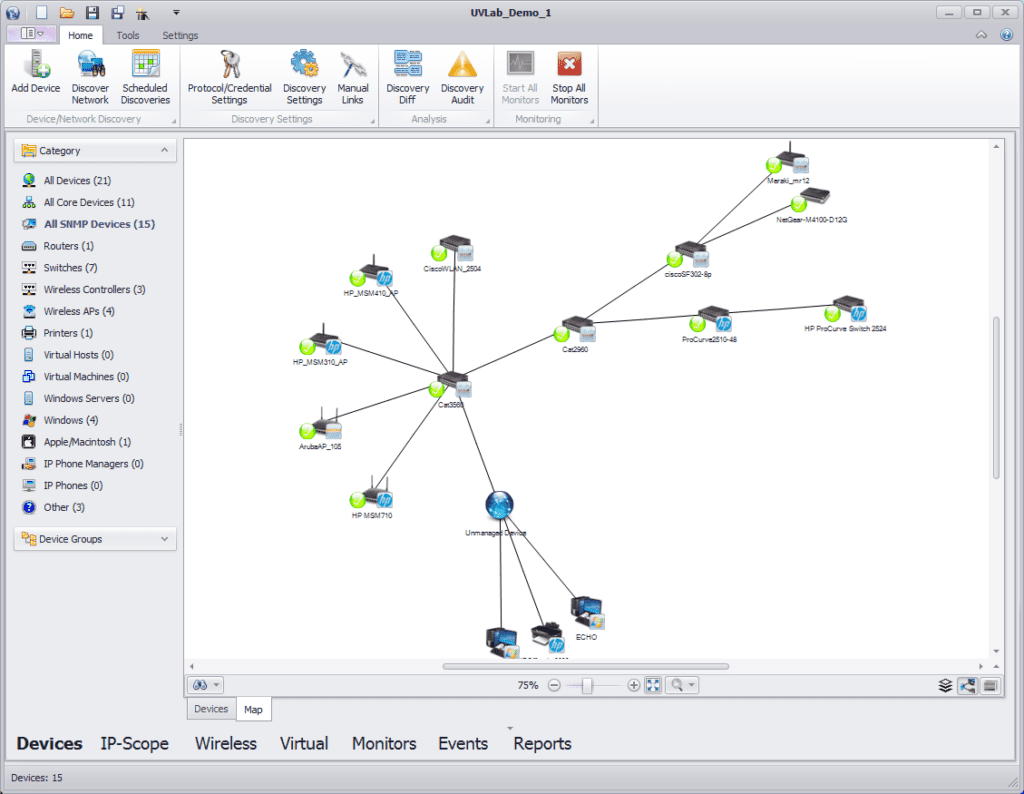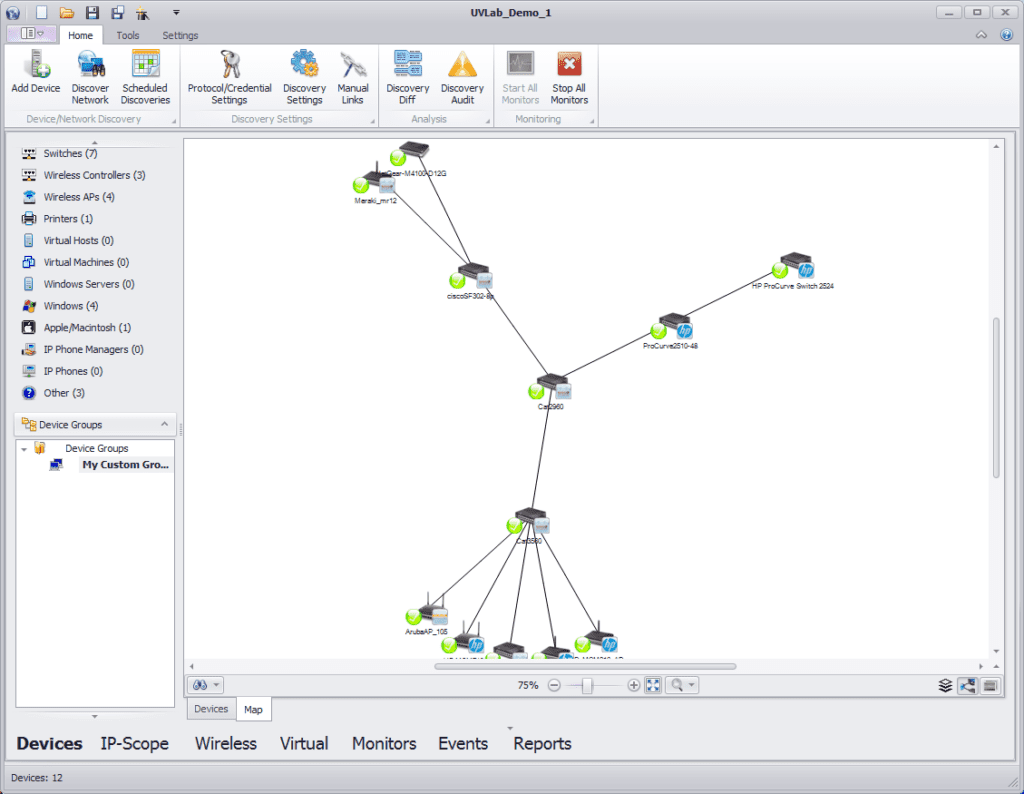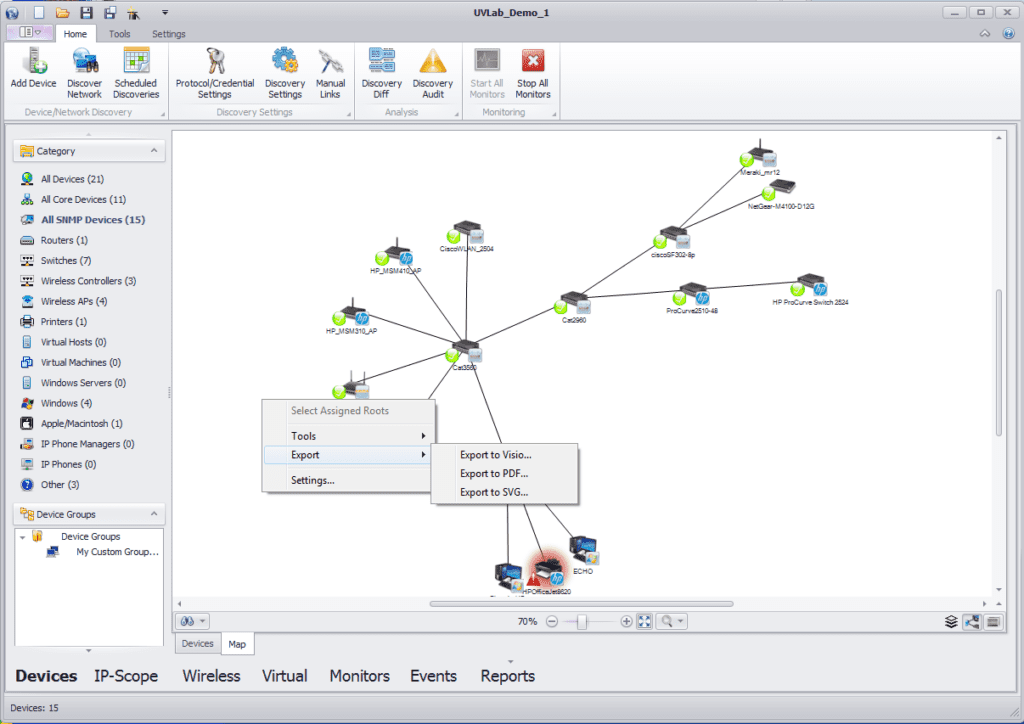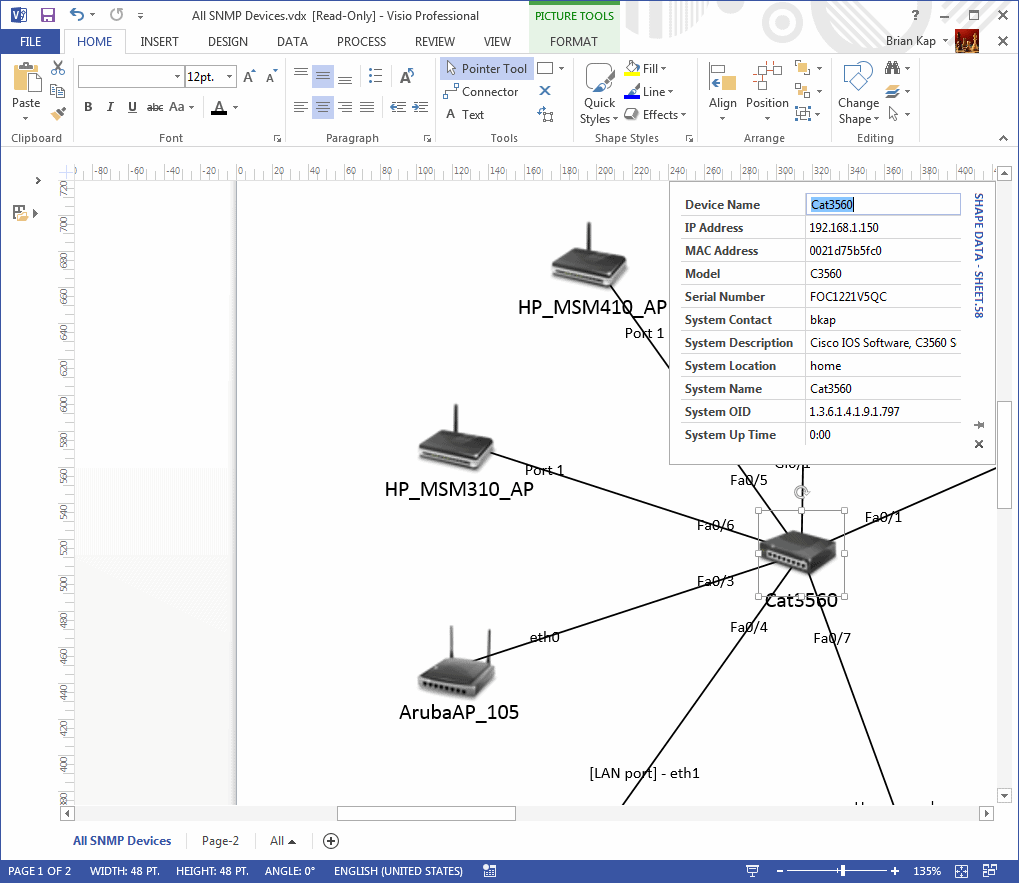
UVexplorer helps you visualize your IT environment with network connectivity maps, including physical (i.e., port-level) connectivity. Being able to see pictures of your network is very helpful in understanding, managing, and monitoring your IT infrastructure. UVexplorer was built with the intelligence to gather detailed topology information for any type of environment. Whether it is wired, wireless, or virtual, UVexplorer automatically generates the maps you need to “see” everything on your network.
UVexplorer provides the following mapping features:
Dynamic Maps – UVexplorer automatically generates network maps for each device group in your network (Routers, Switches, Printers, Servers, etc.). There is no need to create network maps by hand, and your maps are always up-to-date with the latest discovery results. (The map below shows all SNMP- enabled devices in the network. It was auto-generated by UVexplorer.)

Custom Maps – If UVexplorer’s built-in maps don’t meet your needs, you can always create custom maps containing exactly the devices you are interested in. When building custom maps, UVexplorer makes it easy to build out your maps step-by-step using its detailed knowledge of how your network devices are connected together. For example, you can right-click on a device, and select “Add Connected Devices” to automatically add to your map some or all devices connected to the selected device. This way you can create maps that look just the way you want without doing a lot of work. (The map below shows a custom group of devices that was selected by the user. The map was auto- generated by UVexplorer, but you can also manually position devices on a map, if you prefer.)

Automated Map Layout – When creating a map, you can manually position devices on your map, if you want. Or, you can let UVexplorer do the work. To make map creation easier, UVexplorer contains map layout algorithms that automatically position devices on your map, so you don’t have to. All you need to do is specify which devices you want on your map, and UVexplorer does the rest.
Layer-2 Maps (i.e., port-level connectivity) – Maps showing the physical connections between the devices on your network.
VLAN Maps – Maps for each of the VLANS on your network.
IP Subnet Maps – Maps for each of the IP subnets on your network.
Wireless Associations – Connections between wireless controllers and the wireless access points that they control.
Virtual Associations – Connections between VMware and Hyper-V servers and the virtual machines running on them.
IP Phone Associations – Connections between IP phone managers and the IP phones that they manage.
Map Export – UVexplorer can export network maps to several popular file formats, including Microsoft Office Visio, PDF, and SVG. This lets you share maps with co-workers, create presentations, and print maps for a variety of purposes.
The following screenshots demonstrate exporting a UVexplorer network map to Microsoft Office Visio and PDF file formats.




All Rights Reserved. UVnetworks © 2015 – 2024